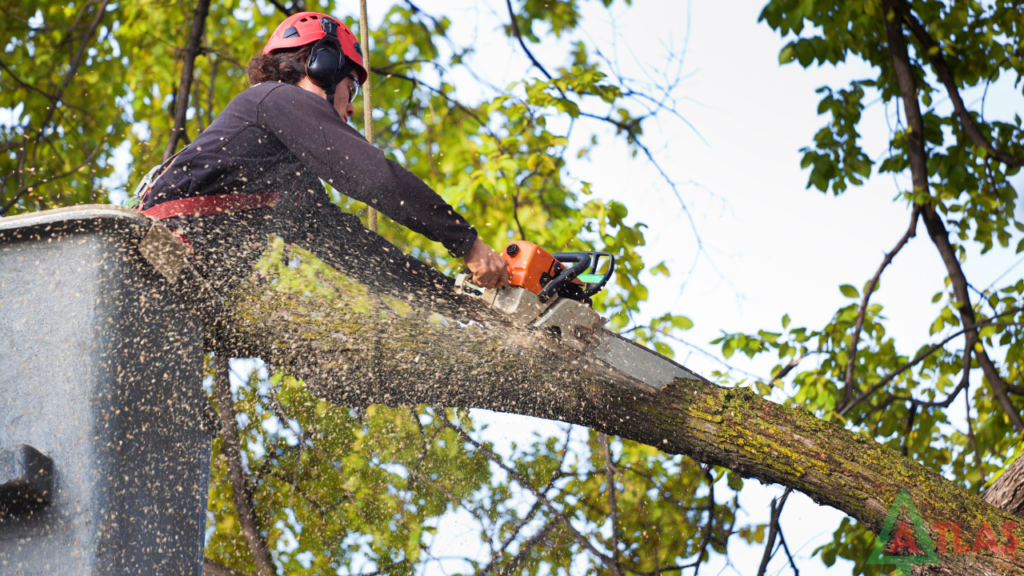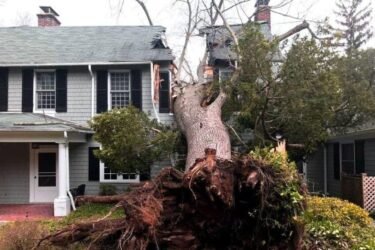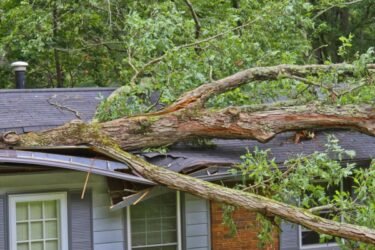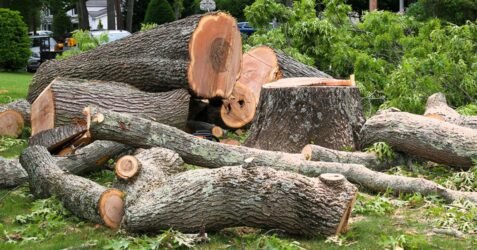Storm-Damaged Trees? Learn the Safest and Fastest Way to Remove Them in Springfield, MO! Severe storms in Springfield, MO, can lead to destruction, often causing trees to fall on homes, roads, or power lines. Emergency Tree Removal in Springfield after a storm is critical to prevent property damage, restore safety, and clear debris efficiently. Flooded trees can pose hazards such as electrical issues, blocked access, and additional structural damage without proper action.
This guide will walk you through handling tree removal after a storm, when to call professional Springfield tree services, and how to prevent future risks.
Assessing the Damage: Is Immediate Tree Removal Necessary?
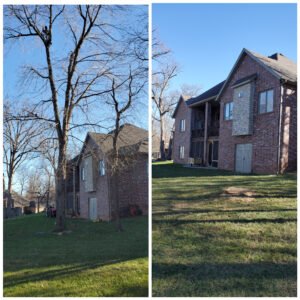
After a storm, evaluating the damage is the first step. Some trees can recover adequately, while others pose serious safety threats and must be removed immediately.
Signs That a Tree Requires Emergency Removal
- The tree has fallen onto a structure (home, garage, fence, or vehicle).
- Cracks or splits in the trunk indicate severe structural weakness.
- The tree is leaning dangerously toward a building or power line.
- Uprooted roots signal instability, making the tree likely to collapse.
- Large broken branches pose a risk of falling.
If any signs are present, contact emergency tree services in Springfield immediately to ensure a swift and safe removal.
What to Do Immediately After a Tree Falls?
Taking the proper steps after storm damage can prevent further injuries and property loss.
1. Prioritize Safety First
Avoid damaged trees and broken branches, as they may fall unexpectedly. Avoid touching or approaching downed power lines—call emergency services immediately if a tree has fallen on electrical wires. Check for structural damage to your home or property before entering.
2. Contact Professional Tree Services
Emergency tree removal requires specialized equipment and expertise. Call a Springfield tree removal services provider for fast assistance. T & F Tree Service offers 24/7 emergency removal, ensuring quick and efficient handling of fallen trees.
3. Document the Damage for Insurance Claims
Take clear photos and videos of the damage before any removal work begins. Contact your homeowner’s insurance provider to understand your coverage. Keep records of tree service estimates and invoices for claim purposes.
Why DIY Tree Removal is Risky After a Storm?
While homeowners may consider handling small debris themselves, removing storm-damaged trees without professional help is dangerous.
Common Risks of DIY Tree Removal:
- Injury from falling branches or unstable trunks.
- Electrocution risks occur when trees become entangled with power lines.
- Improper cutting techniques that cause further property damage.
- Lack of proper tools makes removal inefficient and unsafe.
For safe and effective tree removal, rely on Springfield tree services with the right experience, equipment, and techniques.
The Professional Tree Removal Process: What to Expect?
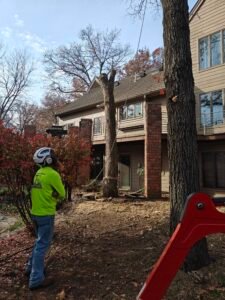
Hiring tree removal services in Springfield ensures safe, fast, and efficient storm recovery. Here’s how the process works:
Step 1: On-Site Inspection
Before planning removal, a professional arborist will assess the tree’s condition, stability, and potential hazards.
Step 2: Controlled Cutting and Removal
Experts use ropes, cranes, and advanced cutting techniques to remove tree sections, safely minimizing further damage.
Step 3: Stump Grinding and Debris Cleanup
After removing the tree, stump grinding prevents regrowth and enhances landscape aesthetics. Professionals also clear branches, leaves, and debris, restoring your yard’s safety.
Step 4: Final Safety Check and Property Restoration
A post-removal inspection ensures no risks remain, and necessary tree trimming is done to prevent future hazards.
Preventing Future Storm Damage: Tree Maintenance Tips
Proactive tree care and maintenance can minimize storm-related risks and keep your property safe year-round.
- Schedule Regular Tree Inspections: Professional tree services in Springfield can identify weak or diseased trees before they become a threat.
- Trim Overgrown Branches: Routine tree trimming in Springfield, MO, helps reduce the likelihood of large branches breaking off during storms.
-
- Remove Dead or Unstable Trees in Advance: If a tree shows signs of decay, leaning, or root instability, preemptive removal is safer and more cost-effective than emergency removal.
- Reinforce Trees in Storm-Prone Areas: Bracing or cabling techniques can help secure trees with weak limbs, reducing the risk of storm damage.
Why Choose T & F Tree Service for Emergency Tree Removal?

When storms strike, T & F Tree Service provides fast, reliable, and safe emergency tree removal in Springfield, MO. Here’s why homeowners trust us:
- 24/7 Emergency Response
- Certified Arborists & Advanced Equipment
- Complete Cleanup Services
- Affordable & Transparent Pricing
Call T & F Tree Service today for professional Springfield tree removal services!
Conclusion
Emergency tree removal after a storm requires quick action, professional expertise, and the right tools. Prioritizing safety, consulting experts, and proactively maintaining trees can help prevent future costly damage.

